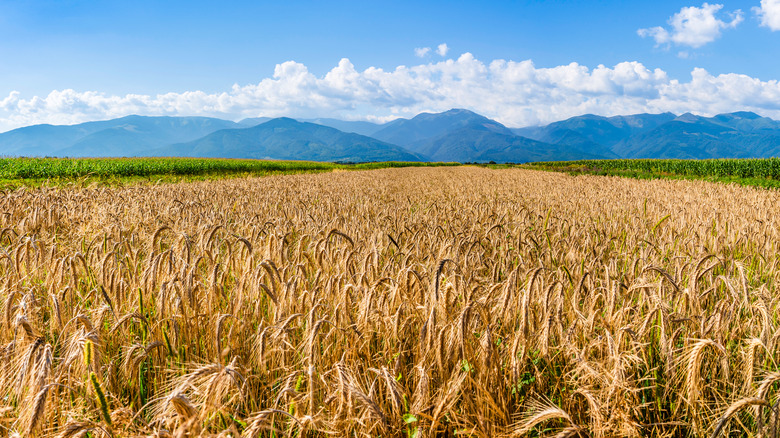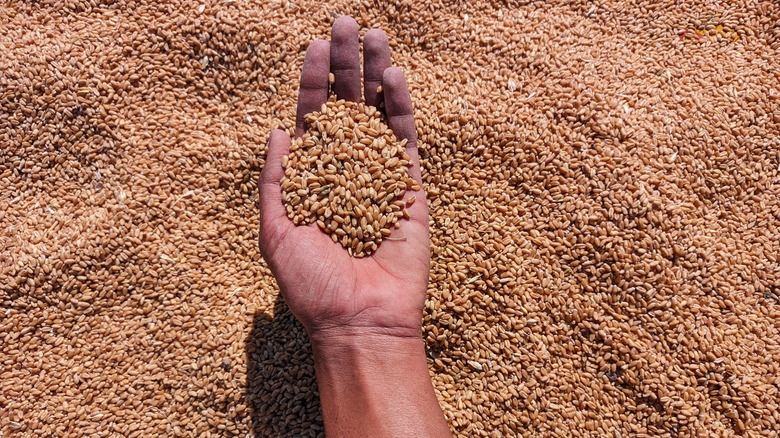How India Is Trying To Keep Its Skyrocketing Wheat Prices In Check
India is considering further measures to fend off a potential cost of wheat crisis. In the beginning of May, Bloomberg reported that a record heat wave in the country reduced wheat estimates by 10% to 50%. This was on top of the pre-existing wheat shortage that was created by Russia's invasion of Ukraine. Millions depend on farming as the source of their livelihood and while people may develop strategies to sow wheat more regularly to offset future heat hurdles, this year's supply is drastically low.
The severity of the shortage soon prompted the decision to ban all wheat exports. CNN wrote that while people hoped that they could rely on India, which was traditionally a massive exporter to sustain the market, India claimed it needed to meet its own needs. The shortage induced by the heat wave did not receive the government's blame, however. Rather, the government claimed that while there was in fact no shortage, unregulated exports had caused local prices to rise to a point of crisis. "It was not wheat alone. The rise in overall prices raised concerns about inflation and that's why the government had to ban wheat exports," one government official explained (per CNN). Evidently, though, further wheat measures have been proven necessary.
India attempts to attract imports
Despite banning the export of wheat, it has become obvious that more is still needed to lower the domestic cost of wheat. That, at least, is the conclusion Reuters drew when it reported that the government was considering a 40% reduction on import duty for wheat. Later, bans on the export of maida, a finely milled flour, and semolina would be imposed on August 14.
This measure takes on a greater significance when you consider India's import-export ratio when it comes to wheat. According to the OEC, India exported $244 million in wheat in 2020, making it the 19th largest exporter in the world. As one might expect, it only imported $394k in the same period, meaning it was only the 166th largest importer.
Besides being an obvious side effect of being a massive wheat producer, Reuters explains that the disparity is due to the fact that the domestic price of Indian wheat is nearly a third of the global one. So importing wheat doesn't make financial sense. "If global prices fall by another 20% and Indian prices continue their rally, then maybe, sometime after a few months, imports might become feasible," one trader commented. However, the government may do all it can to encourage traders to shore up their supply with internationally sourced wheat.

